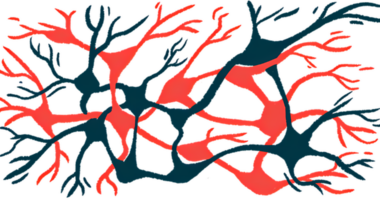STAR Molecule to Restore GCase Activity Showing Early Potential

An oral candidate therapy for Parkinson’s disease called GT-02287 lowered the levels of alpha-synuclein accumulation and inflammation, and lessened behavioral deficits in animal models of the disease.
“We are working diligently to advance this breakthrough compound to the clinic and bring it one step closer to meeting the currently unaddressed needs of patients with this debilitating disease,” Eric Richman, CEO of Gain Therapeutics, which is developing the therapy, said in a press release.
Results of preclinical tests were presented in the poster “Brain-penetrant structurally targeted allosteric regulators for glucocerebrosidase (GCase) show promising in vivo pharmacological activity in animal models of Parkinson’s disease” at the Society for Neuroscience Annual Meeting held virtually on Nov. 8–11.
Mutations in the GBA1 gene are known to raise by as much as five times the risk of developing Parkinson’s. Patients carrying mutations in this gene have earlier disease onset, as well as faster progression and non-motor symptoms.
This gene carries the instructions for the production of the enzyme beta-glucocerebrosidase (GCase) — an important component of cells’ recycling factories, called lysosomes.
Its lack, or its faulty activity, causes cells to accumulate toxic substances inside them, such as the protein alpha-synuclein, a hallmark of Parkinson’s disease.
Lower GCase activity is also evident in people with idiopathic Parkinson’s, where the disease’s cause is not known and GBA1 mutations are not evident.
“Decreased GCase activity may contribute to pathogenesis in many forms of PD [Parkinson’s disease],” the researchers wrote in their poster, “and enhancing the activity” of this enzyme “may represent a potential therapeutic strategy.”
GT-02287, along with another candidate therapy called GT-02329, belongs to a class of molecules called small-molecule structurally targeted allosteric regulators, or STARs. The molecules were designed using Gain’s Site-directed Enzyme Enhancement Therapy (SEE-Tx) system, which uses the 3-D structure of proteins to identify and predict the affinity of potential drug-binding sites.
GT-02287 works by binding to and helping the GCase protein to fold correctly. Faulty proteins are usually the result of abnormal folding, since proteins need a very specific shape to function properly. Previous research had shown that treatment with STARs increased GCase protein levels and their transport to lysosomes, raising the levels of GCase enzymatic activity.
“STARs are small molecule therapies that have significant advantages over the current standard of care for disorders associated with protein misfolding,” Gain reported in its release. “They can be administered as a simple oral pill and can reach organs and tissues not typically accessible through current therapeutic options, including the brain, bone and cartilage.”
Researchers administered oral GT-02287 to different Parkinson’s disease animal models. Treatment was seen to reduce toxic alpha-synuclein accumulation and inflammation, and to lessen behavioral deficits in a dose-dependent manner. The therapy also showed a favorable safety profile.
“This positive set of data point to the lysosomal GCase enzyme as a promising target for the restoration of key biological activities found to be impaired in GBA1-related as well as idiopathic Parkinson’s Disease patients,” Richman said.







